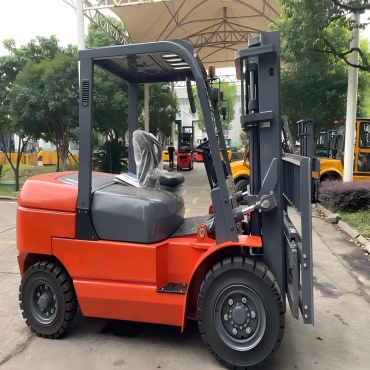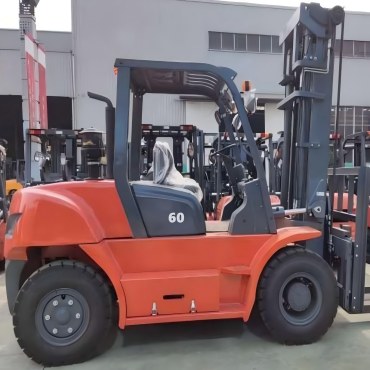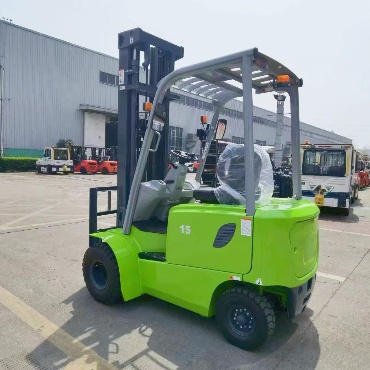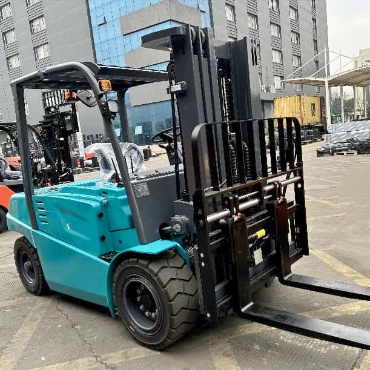- Diesel Forklift
-
- 25-30tonne Diesel Forklift 16T Forklift Truck 4.5 Ton Diesel Forklift 48 Ton Diesel Forklift 3 Ton Diesel Forklift 3.5 Ton Diesel Forklift 2.5 Ton Diesel Forklift 33 Ton Diesel Forklift 15 Ton Diesel Forklift 10 Ton Diesel Forklift 8 Ton Diesel Forklift 4 Ton Diesel Forklift 6Ton Forklift 2 Ton Diesel Forklift 1 Ton Diesel Forklift 1.8 Ton Diesel Forklift 1.5 Ton Diesel Forklift 7 ton forklift 35 ton Forklift Rough Terrain Forklift
- Electric Forklift
-
- Narrow Aisle Stand Up Counterbalance Forklift – High Efficiency Warehouse Solution 3.8ton Low Voltage Lithium Battery Forklift 12t Lithium high capacity forklift 12t large capacity electric forklift 8ton Electric Forklift 10t electric forklift truck 25ton Lithium Battery Forklift 7ton Electric Forklift 16-20t Large Capacity Lithium Battery Forklift 2 Ton Electric Forklift 1.8 Ton Electric Forklift 6 Ton Electric Forklift 1.5 Ton Electric Forklift 1.0-1.5 Ton Electric Forklift 2.5 Ton Electric Forklift 3.5 Ton Electric Forklift 4.0-4.5 Ton Electric Forklift 5 Ton Electric Forklift 3 Ton Electric Forklift 1.6-1.8Ton Three Wheel Electric Forklift 2 Ton three wheel electric forklift
- Rough Terrain Forklift
-
- 3.5t-4ton 4 wheel drive forklift 7 Ton All Rough Terrain Forklift 2-2.5T Rough Terrain Forklift Truck 4 ton off road forklift truck 3t 4 wheel drive forklift for sale 3.5t Two Wheel Drive Rough terrain forklift 3T Diesel Rough Terrain 2WD Forklift FLIFT 3.5ton all rough terrain forklift for sale 2WD 3t off Road Rough Terrain Forklift
- Electric Reach Truck & Pallet Truck / Pallet Stacker
-
- 5ton end rider electric pallet truck with customized 1.8m fork length 10ton-15ton heavy duty electric pallet truck 2.5ton all terrain electric pallet jack 1.5ton-2ton all terrain electric pallet truck with crane jib Counterbalanced Pallet Stacker 1600 lb to 2000 lb Capacity for Indoor Warehouses Heavy Duty 2T-2.5T Electric Stacker Forklift | High-Performance Stacker Lift High-Capacity 2.5t electric reach truck 1.0t -1.5t Electric Walkie Straddle Stacker 2ton Fully Electric Pallet Stacker 3 stage mast 2ton electric rough terrain pallet stacker 1.5ton off road Rough Terrain Stacker 1.8ton walkie Electric Pallet Truck Jack 1.5Ton Electric Pallet Stacker | Durable Walkie Stacker for Easy Material Handling 1200kg walking type electric pallet stacker 2ton roll and reel electric pallet truck Walkie Counterbalanced Stacker 1500–2000kg Capacity Compact Design 1ton outdoor rough terrain counterbalanced pallet stacker 3300lbs Electric off-road pallet stacker 2t Rough Terrain Pallet Truck Powered Pallet Truck with PU Wheels-2000kg Electric Pallet Jack 2t Elecric Hand Truck 1.5 Ton Electric Walkie Pallet Truck – Compact Power for Efficient Material Handling 2 Ton Reach Forklift 1.5 Ton Reach Forklift 2Ton -3Ton Electric Pallet Truck Semi-electric Pallet Stacker 1ton-1.6ton 3 Way Pallet Stacker Multi-Directional Sideloader Forklift 4 direction reach truck
- Customization Forklift
-
- 900kg CDD09B Electric Walking Type Counterweight Stacker Professional Walking Type Electric Stacker with Special Attachment 1ton Electric Outdoor Rough Terrain Telescopic Spreader Stacker 4t QDD40 Seated type Electric Tractor QDD60 Seated Type Fully Electric Tractor 3t QDD30C Electric Tractor with Turning Radius 1545mm 2t CQD20A Electric Simple Type Reach Forklift Truck 1.5t CQD15A Simple Type Electric Reach forklift Truck 5t Convertible Seated Electric Flat Truck 3t CBD30Z Electric Vehicle Transfer Truck 1.5t CDD15Y Electric Pallet Stacker (Rough Terrain) 1t CXD10-45 Electric High Lift-Order Picker 2t CQD20S-60 Four-way Walking Type Reach Forklift Truck CDD10A/15A Walking Type Fully Electric Pallet Stacker 3t QDD30A Standing Type Electric Tractor 1t CSD10 Man Mount Three-way Stacker 1.5t AGV type CDD15J-16 Electric Pallet Stacker CBD80 8t Electric Pallet Stacker 6t CBD60 Electric Pallet Stacker CBD120 1.2t Electric Pallet Stacker 2t CDD20D-30 Walking type Electric Pallet Staccker CDD08B-25 Counterweight Electric Pallet Stacker
- Forklift Attachements
-
- Waste Paper Fixture Fixed Short Arm non-sideshifting non-sideshifting Fixed Short Arm non-sideshifting Non-sideshifting Hinged Forks Caton Clamp Rotator non-Sideshifting Tire Clamps Pusher Turning Fork Clamps non-sideshifting Log Holder Sideshifting Broke Paper Clamps Sideshifting Sideshifting Single Load Stabilizer Fork Positioners Single Double Pallet Handler
Whether the forklift should be equipped with a fire extinguisher
Date: 2025-02-18 View:
With the rapid development of industry, forklift trucks are being used more and more frequently, and safety issues are surfacing - the risk of fire.
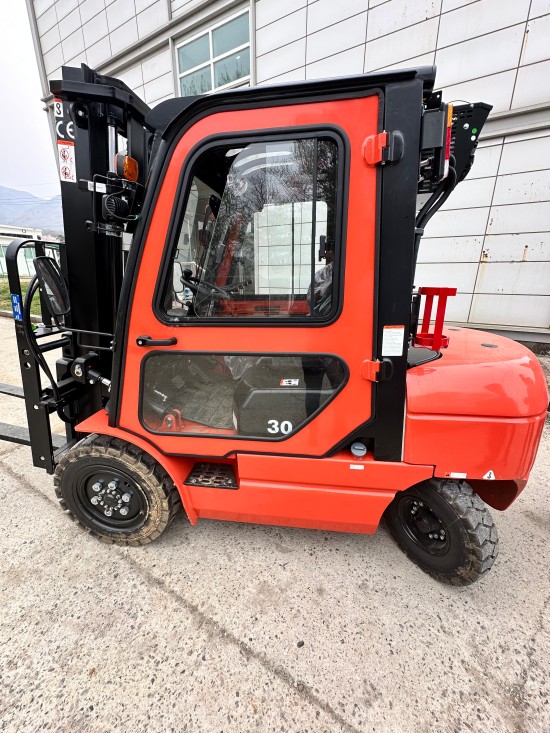
Proponents argue that early extinguishing of fires can effectively prevent the spread of fire and reduce the serious consequences of fire accidents that may bring about casualties,
property damage and production standstill;
Opponents point out that the provision and maintenance of fire extinguishers, as well as personnel training,
will increase the cost of the enterprise and may have some impact on the operation of forklift trucks.
In this paper, the fire risk of forklift trucks will be analysed in depth, and combined with domestic and international regulations,
industry standards, from both sides to explore the need for fire extinguishers.
Fire Risk Analysis of Forklift Trucks
Fire is a sudden and destructive safety hazard, and forklift trucks face a variety of potential fire risks due to their work characteristics and operating environment.
Next, we will specifically analyse the main causes and sources of risk of fire that may be triggered by forklift trucks in daily use to help you better identify and prevent these risks.
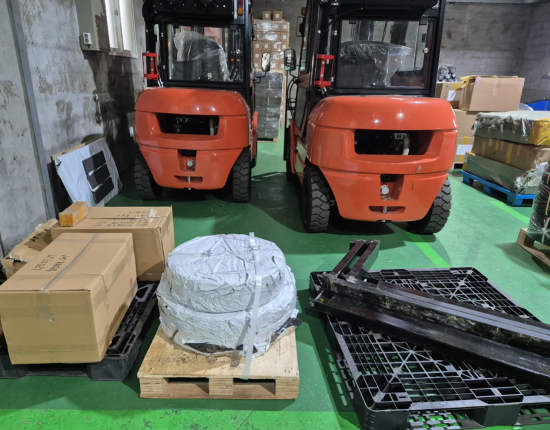
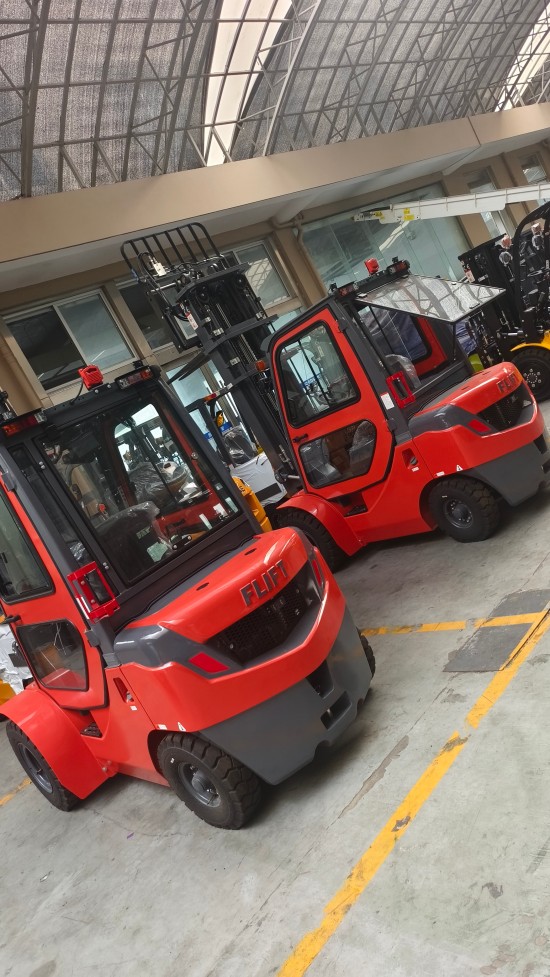
I. Causes of forklift truck fire
1. Battery failure (electric forklift)
Thermal runaway: Lithium battery thermal runaway occurs when it is overcharged, over-discharged, short-circuited or mechanically damaged.
The chemical reaction inside the battery is out of control leading to a sharp rise in temperature, which in turn triggers combustion or even explosion.
Leakage of electrolyte: When the electrolyte (sulphuric acid) of lead-acid batteries leaks,
it corrodes the electrical wiring or produces sparks in contact with metal, triggering a fire.
Improper charging: Using a mismatched charger or charging at too high an ambient temperature causes the battery to overheat,
increasing the risk of spontaneous combustion.
2. Fuel System Problems (Internal Combustion Forklift Trucks)
Fuel leakage: Fuel leakage is caused by aging fuel lines, loose joints or broken fuel tanks.
When the leaked fuel meets a hot surface (e.g. exhaust pipe) or sparks, it is very easy to burn.
Fuel volatilisation: In a high temperature environment, fuel volatilises to form a combustible gas, which is ignited if it accumulates in a confined space.
Fuel pump failure: overheating of the fuel pump or electrical failure causes fire.
3. Electrical system failure
Electrical short circuit: aging wires, broken insulation or loose connections lead to short circuit,
generating high temperature or even sparks, igniting the surrounding combustible materials.
Controller overheating: the motor controller of the forklift truck overheats when it is running under high load for a long period of time,
and if the heat is not dissipated properly, it will cause a fire.
Failure of electrical components: Failure of relays, fuses and other electrical components generates arcs or high temperatures,
which become the source of fire.
4. Mechanical friction and overheating
Overheating of brake system: Frequent braking or improper adjustment of brake pads leads to overheating of the brake system,
which ignites nearby combustible materials (e.g. oil, dust).
Bearing failure: Insufficient lubrication or damage to bearings leads to friction overheating, which in turn leads to fire.
Hydraulic system leakage: Hydraulic oil leaks and burns when it encounters a hot surface (e.g. engine).
5. Operating environment factors
High-temperature environment: When working in a hot workshop or in the open air in summer, the battery,
engine and electrical system of the forklift truck are more likely to overheat, increasing the risk of spontaneous combustion.
Accumulation of flammable materials: In warehouses or workshops, the accumulation of large quantities of flammable materials,
such as cartons, plastic products, chemicals, etc., provides conditions for the spread of fire.
Dusty environment: In a dusty environment, dust may accumulate on the surface or inside of the forklift truck,
which may cause explosion or combustion when exposed to high temperature or sparks.
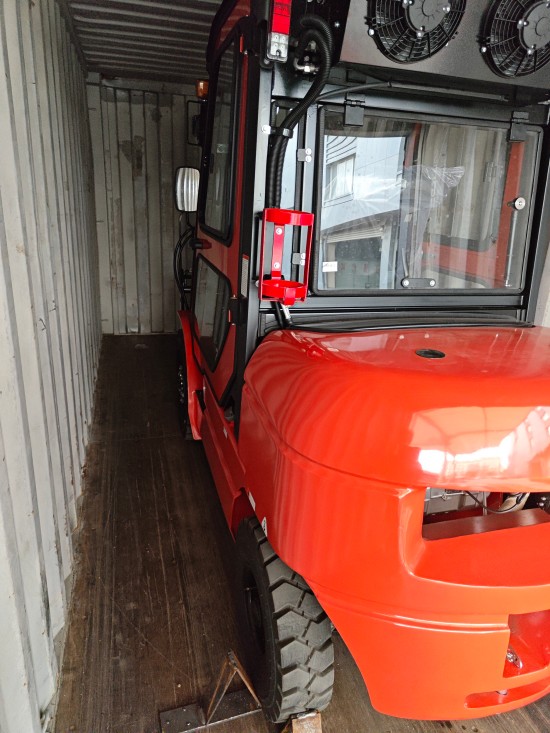
6. Improper maintenance
Lack of regular inspection: Failure to regularly inspect key components such as batteries, fuel system, electrical wiring, etc.
results in potential faults not being detected in time.
Use of poor-quality parts: Replacement of batteries, electrical wiring or hydraulic parts with poor-quality products increases the risk of failure.
Insufficient cleaning: Combustible materials such as oil and dust accumulated on the surface of forklift trucks are not cleaned up in time,
which become the fuelling agent of fire.
7. Human error in operation
Overloaded operation: prolonged overloaded operation leads to overheating of battery, motor or engine.
Improper charging operation: charging is not in accordance with the norms of operation (such as not using a special charger,
charging ambient temperature is too high) triggered by battery failure.
Collision or damage not repaired in time: If forklift trucks are not inspected and repaired in time after a collision during operation,
it may lead to damage to the battery, fuel system or electrical wiring, increasing the risk of spontaneous combustion.
Violation of work discipline: Forklift drivers smoke in violation of the law, increasing the risk of fire in a flammable environment.
Consequences of accidents
Casualties: In the early stage of a fire, if it is not extinguished in time, the personnel at the scene are likely to be injured due to inhalation of toxic fumes or high temperature burns,
which may even lead to death in serious cases.
Property loss: a fire can easily destroy a large amount of goods in the warehouse, and the loss may reach millions or even hundreds of millions of dollars.
Production standstill: Equipment damage and plant repairs due to a fire usually take weeks or even months,
creating the risk of prolonged downtime and affecting the supply chain and customer relationships.
Regulations and industry standards
Globally, the safety management of forklift trucks is subject to strict regulations and standards,
but the configuration of fire protection equipment varies greatly from country to country and region to region.
1. International Standards
U.S. OSHA regulations
The U.S. Occupational Safety and Health Administration's (OSHA) Standard 1910.178 details the safety requirements for the design,
use and maintenance of forklifts (and other industrial vehicles).
In particular, OSHA emphasises the need for fire protection, such as portable fire extinguishers and emergency flushing facilities,
in high-risk areas such as battery charging areas to reduce the risk of fire accidents.
OSHA does not specify that every forklift must be equipped with a fire extinguisher, but its requirements prompt companies to strengthen fire prevention measures in high-risk areas.
EU Machinery Directive (MD 2006/42/EC)
The EU Machinery Directive 2006/42/EC aims to ensure that machinery products marketed in the EU meet basic health and safety requirements.
The Directive requires machinery and equipment to be designed and manufactured with due regard to safety in use, including fire protection, self-testing of faults and emergency protective measures.
For forklift trucks, the Directive requires products to have adequate safety protection measures,
but it does not mandate that each forklift truck must carry an independent fire extinguisher, but focuses on overall safety design and risk control.
2. Domestic norms
Law on the Safety of Special Equipment and Safety Regulations on Intra-plant Transportation in Industrial Enterprises
In China, forklift trucks, as special equipment, are regulated mainly under the Special Equipment Safety Law and the Safety Regulations for Transportation within Industrial Enterprises.
These two regulations have clear requirements on the use of forklift trucks, regular inspections, maintenance and operator training, etc.
However, on the configuration of fire protection equipment, the relevant provisions are often vaguely expressed and lack specific mandatory provisions.
For example, in some in-plant transport safety regulations, although it is mentioned that fire prevention measures should be taken,
it may not clearly require forklifts to be equipped with fire extinguishers.
Industry self-regulatory standards
In addition to national laws and regulations, different industries (e.g., logistics, chemical, warehousing, etc.)
will often develop more stringent safety standards based on the risk level of their own operating environment.
In some high-risk areas, internal standards usually require forklift trucks to be equipped with fire extinguishers that meet explosion-proof or specialised requirements,
and also require regular maintenance, inspection and special training for operators, thus forming a set of more comprehensive safety management system.
In the field of forklift safety management, international and domestic standards have made many provisions,
but there is still an obvious gap in the mandatory provision of fire protection equipment, especially fire extinguishers.
The controversial topic of whether forklift trucks should be mandatorily equipped with fire extinguishers or not,
the following is a comprehensive compendium of the main arguments for and against the measure, and a more in-depth analysis.

Why support the provision of fire extinguishers?
1. Prioritise safety prevention
Rapid response to contain the spread of fire
The early stage of a fire is often the best time to extinguish a fire, and equipping forklift trucks
with fire extinguishers can greatly reduce the risk of a fire spreading by responding to a fire when it first breaks out.
This ‘self-help’ capability is particularly important in a fire emergency.
Hand-held extinguishers are more effective at dealing with small fires than relying only on fixed fire protection systems, preventing fires from getting out of control.
Reduced reliance on escape time
In cramped storage environments, the window of time for people to escape in the event of a fire can be very limited.
The on-site use of fire extinguishers can slow down the fire and gain valuable escape time,
especially in high-density storage locations or areas where flammable materials are in operation.
2. Economic Benefits
Fire damage far exceeds the cost of extinguishers
A small fire can cause serious economic losses to an organisation, especially in a forklift truck environment, where fires are often accompanied by cargo damage,
equipment downtime and personal injury. The cost of having fire extinguishers is relatively low,
especially in high-risk industries where the cost of purchasing and maintaining fire extinguishers is almost negligible.
Lower Insurance Costs
Some insurance companies will include the configuration of fire extinguishers and other safety equipment in their risk assessment system.
Well-equipped fire protection facilities not only help to reduce the incidence of accidents, but also may significantly reduce insurance costs,
further enhancing the economic benefits of the enterprise. For large logistics and warehousing companies, the benefits of such long-term savings are particularly obvious.
3. Industry Best Practices
Wide range of applications in high-risk industries
Equipping forklifts with fire extinguishers has become common practice in the chemical, warehousing and hazardous goods transport industries.
The risk of fire in these industries is high, and experience has shown that the timely use of fire extinguishers can significantly reduce the threat of fire to people and property.
Drawing on International Experience
Germany and other countries in the forklift safety management, has been through mandatory regulations require some high-risk workplace forklift trucks must be equipped with fire extinguishers.
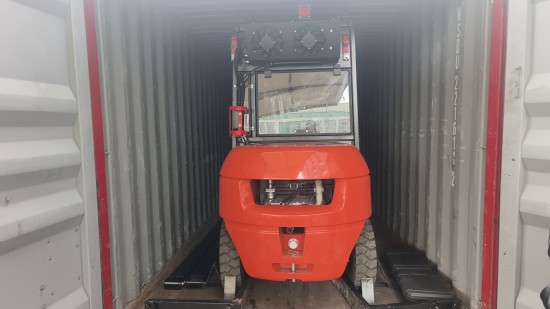
Why not in favour of forklift trucks equipped with fire extinguishers?
1. Cost and Practicality
Economic pressure on small and medium-sized enterprises
For smaller enterprises or those with obsolete equipment, equipping each forklift truck with a fire extinguisher may add an additional cost burden.
In particular, the retrofitting of older forklift trucks often involves restructuring, leading to a further increase in retrofitting costs.
Restricted operating space
Operating space on forklift trucks is already limited, especially for small forklift trucks.
Adding a fire extinguisher device may affect the operator's field of vision and operational flexibility, and even pose a potential risk of accidentally touching or interfering with other equipment.
2. Technical alternatives
Fixed fire protection systems are more efficient
Some modern warehousing environments are already equipped with automatic fire suppression systems, such as sprinklers and auto-sensing fire extinguishers.
These systems provide a full range of fire monitoring and suppression capabilities throughout the operating area, avoiding the limitations of relying on forklift extinguishers alone.
3. Maintenance, management and training challenges
Increased O&M Complexity
Fire extinguishers need to be regularly inspected, maintained and updated to ensure that they can be used properly in emergency situations.
This not only requires additional management costs, but also puts higher demands on an organisation's O&M capabilities.
If fire extinguishers are not serviced for a long period of time or are out of date, they may instead pose a potential hazard due to failure.
Insufficient training for operators
The correct use of fire extinguishers requires specialised training. If the operator lacks the ability to handle emergency situations,
he or she may miss the best opportunity in the event of a fire due to improper operation.
Overall, there is no simple ‘yes’ or ‘no’ answer to the question of whether or not forklifts need to be equipped with fire extinguishers.
My suggestion is that a detailed risk assessment should be conducted based on the actual operating environment and targeted safety measures should be taken.
Only in this way can we ensure safety and at the same time reasonably control costs and achieve optimal safety management.
.png)

